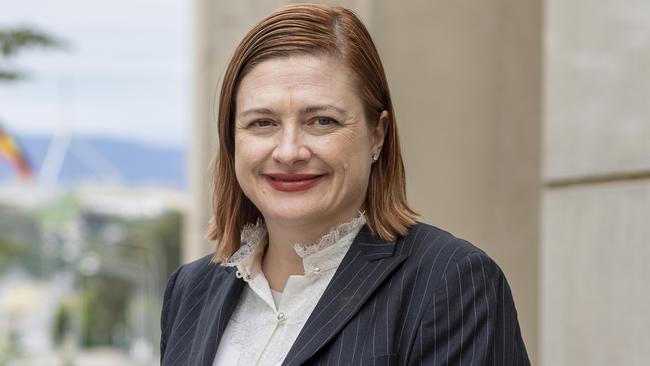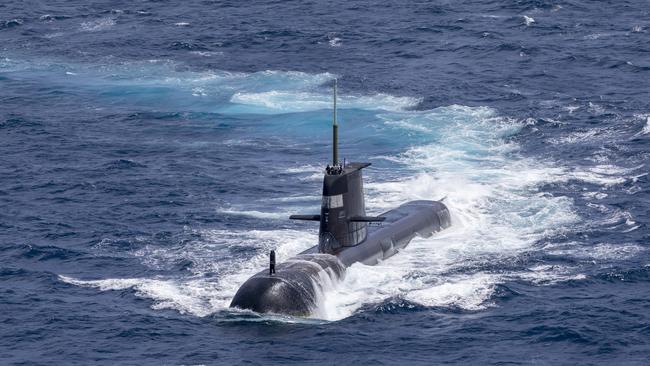Sharp focus is a game changer
Covid cleared the way for a clarity of mission in terms of security

For Professor Tanya Monro, head of the Defence Science and Technology Group and Australia’s Chief Defence Scientist, the high-stakes experiences of Covid-19 and the deteriorating security outlook have had led to a silver lining: clarity of mission.
“The biggest challenge for a science and technology organisation is the sheer range of things for us to do. I would characterise the organisation I first came into as having the Vegemite – being the science and tech – spread so thinly over the toast, you couldn’t really see it,” she tells The Australian, on the cusp of the organisation’s 115th anniversary next week.
“Covid-19 drove this way of working at the whole-of-government level that I’ve never seen before. The priority was unambiguous.
“It’s that shift of mindset where you don’t wait for permission, but you just crack on. The key challenge now is maintaining that in an appropriate way that hooks into the proper processes.
“But I think the real urgency of the geopolitical situation will continue to drive that prioritisation and clarity.”
One obvious example is last year’s AUKUS security pact with the US and UK, which announced Australia’s intention to acquire nuclear-propelled submarines, while also enhancing co-operation on cyber capabilities, artificial intelligence, quantum technologies and additional undersea capabilities.
“I would say that coming into this role, I knew intellectually – but not viscerally – just how deep and powerful and impactful our allied relationships are. I would even argue that the impact of my organisation is sometimes better appreciated by many of our allied countries than by our own system just because of the classified nature of the work we do,” Monro says.
“The sharpness of focus of some of the advanced capability areas within AUKUS is really opening up the opportunity space for us to do some very specific things that, while not yet announced by government, I think will change the game in terms of how Australia works with its closest allies.”

While some experts have expressed the concern that the challenge of adopting nuclear propulsion and the attendant demand for trained nuclear physicists, nuclear engineers, safety experts and many others, may crowd out other advanced capability areas, Monro is confident that Australia has the latent capacity to embrace all the opportunities.
“I think Australia absolutely has the intellectual capacity to get after all these priorities. I think what’s really important is that we put in place the clear career pathways for the kids that are making those career decisions at school now,” she says.
“In the nuclear propulsion space there’s already been scholarships announced at various levels to encourage people to go on those pathways, both studying at some of our institutions here in Australia, but also some opportunities to go overseas and suck up some of the best learning there.
“But the challenge we’ve got is I think a lot of kids don’t study STEM and don’t take it through to high levels because society more broadly doesn’t have those mental models of what a successful STEM career looks like versus, for example, that of a medical doctor.”
Monro argues that there will be “huge opportunity” for the Australian defence industries from AUKUS when key decisions are eventually settled and announced by the Australian government.
“There’s a clear strategic commitment to enhance our mutual reliance across our AUKUS nations, and that means making it easier for Australian companies to have export markets into those allied countries trying to remove some of the barriers that currently are in place, whether that be barriers in terms of export controls or whether that be barriers in terms of information sharing.”
One of the major changes in Monro’s tenure, which began in 2019, is the transition from DSTG scientists being expert arbiters on what foreign technology to acquire, to increasingly backing themselves in the development of sovereign capabilities and extending that faith to partners across Australia’s university sector. The Star Shots program, which covers eight capability areas, is one example.
“We are there between the world of knowledge creation and defence – we speak both languages – and so it is incumbent upon us to help shape and align the nation’s R&D more broadly,” she says.
“Most of the R&D in our wonderful universities is investigator driven, and academic freedom is very important. But the game changer is if we increase the level of awareness and get academics asking questions that are relevant to us, and see a proportion of our academic activity bend towards defence priorities – that will be tremendously exciting. And that really is starting to happen.”
Given the breadth of Australia’s challenges and pace of technological change, some have questioned whether DSTG should be the only defence R&D agency. Last year, the Australian Strategic Policy Institute issued a report calling on the Australian government to create a local version of the US Defense Advanced Research Projects Agency – DARPA – which has funded high-risk research since the 1950s and been credited with scientific discoveries ranging from the internet to weather satellites and GPS.
“It’s something that bubbles up every now and then and, look, I absolutely understand the excitement and enthusiasm that comes when you look at the remit of an agency like that and, indeed, we work very closely with them in a number of really exciting areas,” Monro says.
“But for it to work here, we’d have to scale up the resources put into our defence research and innovation system by at least an order of magnitude. When you take risks, you’ve got to do it at a big enough scale of the wins outweigh the failures, otherwise, it would just cause duplication and fragmentation.”
Monro admits an ongoing issue for DSTG is having to remain circumspect about its successes, a constraint shared with other Australian intelligence agencies in particular.
“To a degree, part of the problem is that if what we’re doing flies below the radar, people assume it’s not happening,” she says.
“People know about the Black Box flight recorders, and JORN over-the-horizon radar. But they may not know we’re the only nation in the world, to the best of my knowledge, where our operational headquarters (Joint Operations Command in Bungendore) has been designed according to insights from the decision sciences in order to empower leaders to process information in the best way or support teams in making better decisions. We do far more than invent widgets.”
When asked what keeps her awake at night, perhaps unsurprisingly, Monro doesn’t hesitate: “Many, many, many things.” But her explanation is far more about our potential as a nation than any fear of adversity or failure.
“For me it is really about making sure that Australia grasps the opportunities we have from our science and technology base. It shouldn’t take our allies saying ‘Australia, you’re really good at this or that’,” she says.
“What keeps me awake at night is the belief that we need to harness the urgency of the moment, but also have the confidence in ourselves and back ourselves to do it.”



